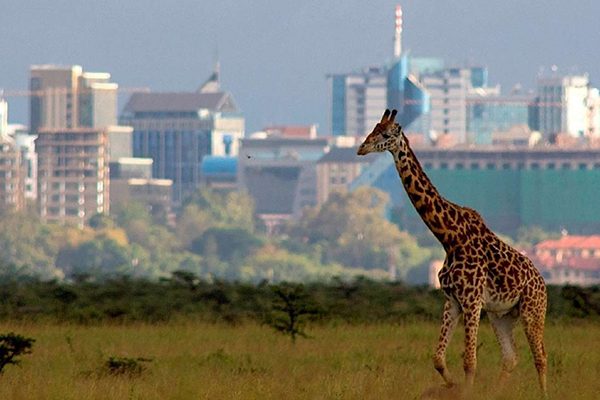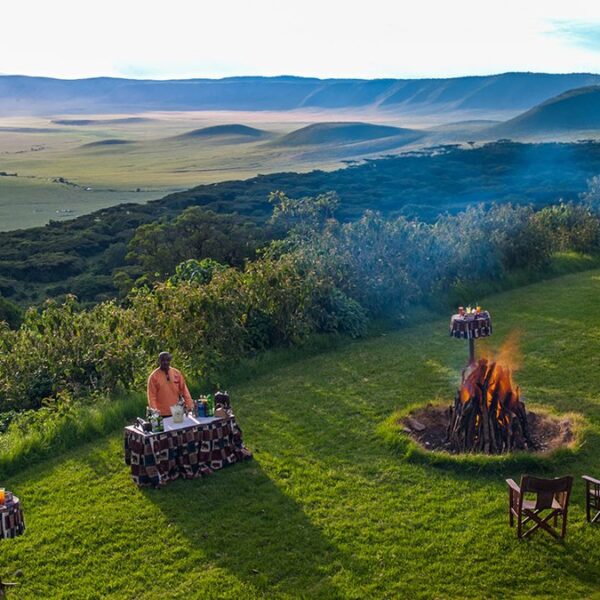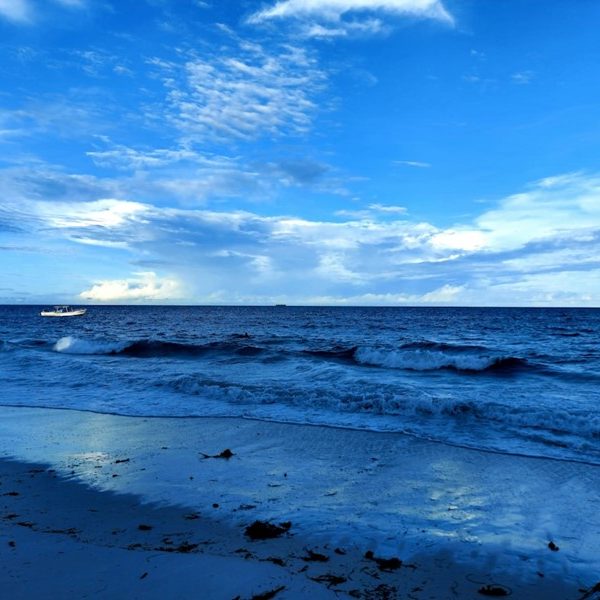Flying vs Driving Between Parks in Kenya: When planning a safari in Kenya — a country renowned for its breathtaking landscapes, iconic wildlife, and rich cultural heritage — how you move between destinations can significantly shape your overall experience. Whether you’re tracking lions across the Maasai Mara, marveling at elephants beneath Mount Kilimanjaro, or relaxing on the shores of Lake Naivasha, the journey between these parks is part of the adventure.
Two main options dominate the safari travel landscape in Kenya: road transfers (driving) and domestic bush flights (flying). Each offers distinct advantages depending on your itinerary, budget, travel style, and expectations. In this comprehensive guide, we explore the pros and cons of both — and why many travelers choose a combination of the two.
The Geography of Kenya: A Quick Overview
Kenya is a vast and geographically diverse country. From coastal beaches and savannah plains to alpine mountains and arid deserts, getting from one ecosystem to another often involves hundreds of kilometers. Roads can be long and rugged in places, while airstrips connect remote conservancies with surprising efficiency.
Understanding Kenya’s layout helps you choose wisely:
- Nairobi is the main transport hub, with two airports (JKIA for international, Wilson Airport for domestic).
- Maasai Mara, Amboseli, Samburu, Laikipia, and Tsavo are key safari destinations, each with unique ecosystems.
- Beach destinations such as Diani, Mombasa, Malindi, and Watamu are often combined with inland safaris.
Driving: The Overland Safari Experience
Why Travelers Love Driving Safaris
Driving between parks immerses you in Kenya’s rich cultural and scenic diversity. You’ll pass bustling towns, small farms, tribal villages, volcanic landscapes, lakes, and open savannahs — all before even entering a game reserve.
Safari vehicles are typically 4×4 Land Cruisers or vans with pop-up roofs for game viewing. These vehicles are both transport and tour vehicle, meaning your guide travels with you throughout your trip, offering continuity and deep local insight.
Advantages of Driving:
Opting to drive between Kenya’s national parks offers a classic safari experience that’s rich in both scenery and cultural depth. Here’s why many travelers prefer to explore by road:
- Scenic Immersion
Every journey by road becomes part of the adventure. From dramatic escarpments of the Great Rift Valley to rolling savannahs and volcanic hills, the landscape is ever-changing. Wildlife can often be spotted along the roadside — zebras grazing, giraffes crossing, or even elephants browsing near the highway.
- Cultural Exposure
Driving offers a front-row seat to everyday life in rural Kenya. Stop at roadside markets, visit viewpoints with sweeping vistas, or tour local towns and villages. These spontaneous moments enrich your safari with authentic cultural encounters that flying often bypasses.
- Cost-Effective Travel
For couples, families, or small groups, driving can be significantly more economical than flying. The per-person cost of a private vehicle with a driver-guide is often lower than multiple plane tickets, especially when covering shorter or mid-range distances.
- Luggage Flexibility
Unlike bush flights, which typically limit passengers to 15 kg in soft-sided bags, vehicles can accommodate more — including hard cases, camera gear, or specialty equipment. This makes driving a better option for long-haul travelers, families with children, or photographers.
- Continuity with Your Guide
When you drive, your safari guide is with you throughout the journey — not just in the parks. This builds trust, ensures personalized service, and allows for deeper insights into local wildlife, history, and culture as the relationship grows over days of shared exploration.
Challenges of Driving:
While road travel in Kenya has many rewards, it also comes with practical considerations that travelers should plan for:
- Travel Fatigue
Driving distances between parks can be long — ranging from 4 to 8 hours depending on your route. Though the scenery is beautiful, the journeys can be tiring, especially over rough terrain. Travelers with limited mobility or those seeking a more leisurely pace may find this demanding.
- Weather-Dependent Conditions
During the rainy seasons (typically March to May and November), some roads may become muddy, waterlogged, or impassable. While experienced guides know alternative routes, travel time can be affected, and detours may be necessary.
- Inconsistent Road Quality
Kenya’s infrastructure is improving, but not all roads are created equal. Some highways are paved and smooth, while others — particularly access roads to remote reserves — can be bumpy, dusty, or riddled with potholes. A well-maintained 4×4 is essential for comfort and reliability.
Example Drive Times Between Major Parks:
| Route | Approximate Time |
| Nairobi to Maasai Mara | 5–6 hours |
| Nairobi to Amboseli | 4–5 hours |
| Maasai Mara to Lake Naivasha | 5 hours |
| Samburu to Ol Pejeta | 3 hours |
| Nairobi to Tsavo East | 6–7 hours |
Flying: The Sky-High Safari Advantage
Why Flying Appeals to Many Safari-Goers
Flying between parks dramatically reduces travel time, giving you more time for game drives, photography, and relaxation. Light aircraft (Cessnas, Caravans) operate from Wilson Airport in Nairobi and land on airstrips within or near parks. This mode is particularly attractive for luxury travelers, older guests, or anyone on a tight schedule.
Advantages of Flying:
- Time-Saving
Skip the long hours on sometimes rough roads — a journey that might take 6 to 8 hours by road (like Nairobi to Maasai Mara) becomes a 45-minute scenic flight. This is particularly helpful for travelers on tighter schedules or those wanting to maximize game-viewing time. - Comfort & Convenience
Flying avoids road fatigue, potholes, and dusty conditions, allowing you to arrive fresh and ready for safari activities. Most flights land on airstrips just minutes away from top lodges and camps, with transfers included. - Incredible Aerial Vistas
Witness Kenya’s dramatic landscapes from above — from the escarpments of the Great Rift Valley to the salt flats of Amboseli and the snowcapped peaks of Mount Kilimanjaro (on clear days). - Access to Remote Areas
Scheduled flights with carriers like Safarilink, AirKenya, and Tropic Air provide direct links to hard-to-reach areas such as Laikipia, Samburu, the Chyulu Hills, and private conservancies deep in the Mara or Tsavo ecosystem. - Efficient Multi-Destination Travel
Flying enables seamless itineraries connecting multiple parks across regions. For example, Safarilink and AirKenya offer multi-stop safari circuits (e.g., Nairobi → Lewa → Maasai Mara), allowing more diverse and efficient travel. - Reliable Schedule Options
Airlines like Jambojet and Fly540 operate multiple daily departures to major hubs like Mombasa, Diani, Malindi, Lamu, and Kisumu — ideal for combining safari with a beach holiday.
Limitations of Flying
- Higher Cost
Flights are generally more expensive than overland travel, especially for solo travelers or couples. While group transfers by road reduce per-person costs, flights offer speed at a premium.
- Strict Luggage Restrictions
Domestic safari flights on carriers such as Safarilink and AirKenya usually enforce a 15 kg (33 lb) limit in soft-sided bags due to aircraft size and balance. Excess luggage may require additional fees or separate transport arrangements. - Less Cultural Immersion
By flying, you miss out on local roadside experiences—like impromptu market visits, scenic viewpoints, or stops at heritage sites—which are often highlights of road travel. - Weather Delays
Flights, especially to remote airstrips, can be delayed by poor visibility or heavy rains, particularly during the long (March–May) and short (November) rainy seasons. - Fixed Schedules
While flight carriers operate efficiently, you’re often bound to specific departure times. In contrast, road trips allow greater flexibility and custom pacing.
Popular Flight Routes:
| Route | Duration |
| Nairobi (Wilson) to Maasai Mara | 45 min |
| Nairobi to Amboseli | 40 min |
| Maasai Mara to Diani Beach | 1 hr 30 min |
| Samburu to Nairobi | 1 hour |
| Laikipia to Maasai Mara | 1 hour |
Environmental Considerations
As global awareness of sustainability grows, more travelers are factoring in the environmental impact of their choices — and safaris are no exception. Whether you’re flying or driving between Kenya’s national parks, it’s important to understand how each mode of transport affects the planet and how you can reduce your footprint.
Driving Safaris
When shared among several travelers, road transport has a lower carbon footprint per person. Well-maintained 4×4 safari vehicles, especially when traveling in small groups, are relatively efficient. They also allow for fewer take-offs and landings — which are the most fuel-intensive phases of flight. However, road transport still contributes to emissions, especially over long distances and on poor roads where engines work harder.
Flying Safaris
Light aircraft offer unmatched speed and convenience, especially for reaching remote or less accessible parks. However, short-haul flights have a higher per-passenger carbon impact, largely due to their frequency, altitude, and fuel consumption. Still, the aviation industry in Kenya is evolving — many regional carriers are improving fuel efficiency, and some safari operators invest in carbon offset programs to counterbalance flight emissions.
Greener Safaris: Making Responsible Choices
Today, many safari camps and lodges are taking the lead in environmental stewardship by:
- Using solar power and sustainable construction materials
- Operating electric or hybrid safari vehicles
- Participating in reforestation and conservation initiatives
- Supporting local conservation education and employment
As a traveler, you can help by:
- Choosing eco-certified accommodations and operators
- Packing light to reduce aircraft fuel load
- Minimizing single-use plastics and conserving water
- Offsetting your carbon footprint through reputable programs
By making conscious travel choices, you help ensure Kenya’s extraordinary ecosystems remain intact for generations to come — allowing the roar of the lion and the thunder of hooves to echo across the savannah long into the future.
Traveler Profiles: What’s Best for You?
| Traveler Type | Best Option |
| Budget or mid-range traveler | Driving |
| Luxury or honeymoon traveler | Flying or combo |
| Older or mobility-limited guests | Flying |
| Families with young children | Combo (short drives + flight) |
| Photography enthusiasts | Driving (more flexibility) |
| Short-stay travelers | Flying |
| Cultural experience seekers | Driving |
Combination Safaris: The Ideal Balance
For many travelers, the perfect Kenyan safari isn’t an either/or decision — it’s a thoughtful blend of both driving and flying. Combination safaris offer the best of both worlds: the immersive, on-the-ground experience of road travel paired with the speed and convenience of bush flights. This hybrid approach allows you to explore more, avoid travel fatigue, and balance your budget while enhancing the overall richness of your journey.
- Drive In, Fly Out
This is a popular option for travelers who want to soak in the countryside, interact with local communities, and enjoy scenic pit stops on the outbound leg of their safari. After several days of game drives and exploration, a short bush flight whisks you back to Nairobi (or onward to the coast) in under an hour — saving you hours on the road and offering a well-earned rest before departure.
Ideal for: Those starting their safari from Nairobi and ending in the Maasai Mara, Amboseli, or Samburu.
- Fly In, Drive Out
Perfect for those eager to dive straight into the wild, this option gets you to the action quickly with a scheduled flight directly into the heart of a national park or private conservancy.
After several days in the bush, you return overland, stopping at lakes, highlands, or cultural sites along the way for a more gradual, scenic conclusion to your adventure.
Ideal for: Guests with limited time at the start of their trip but flexibility toward the end.
- Multi-Park Routes
For more complex itineraries covering multiple parks across vast distances, flying between distant locations like Samburu, Loisaba, Meru, or the Mara is the most efficient way to cover ground. Once in a region, overland drives can connect nearby parks — for example, Lake Nakuru to Lake Naivasha, or Amboseli to Tsavo — allowing for deeper regional exploration while minimizing unnecessary flights.
Ideal for: Travelers visiting several parks, combining remote and accessible destinations.
Final Thoughts: Tailoring the Journey to You
Choosing between flying and driving across Kenya isn’t about finding a superior option — it’s about selecting what aligns best with your schedule, budget, comfort preferences, and sense of adventure. Each mode of travel offers unique advantages, and the right choice depends on how you want to experience this remarkable country.
Driving immerses you in the heart of the land, offering scenic beauty, cultural insights, and a flexible pace. Flying brings you speed, comfort, and the ability to cover vast distances with ease — ideal for those seeking efficiency or visiting more remote reserves.
At the heart of every unforgettable safari lies personalization. Whether you’re drawn to the romance of an overland road trip, the thrill of arriving by bush plane, or a seamless combination of both, our safari experts are here to tailor every detail of your itinerary. From selecting the perfect lodges to navigating road conditions, bush flight routes, and local experiences, we ensure your journey is safe, smooth, and filled with wonder.
Let Your Safari Reflect Your Spirit — Kenya is Ready When You Are
Whether you’re drawn to the thrill of flight above the savannah or the immersive rhythm of an overland journey, your safari should match your pace, passion, and personality.
At Priority Wild Safaris, we specialize in crafting journeys that are as unique as you are — balancing comfort, adventure, and meaningful moments.
Book with us today and let’s design the safari that tells your story.



